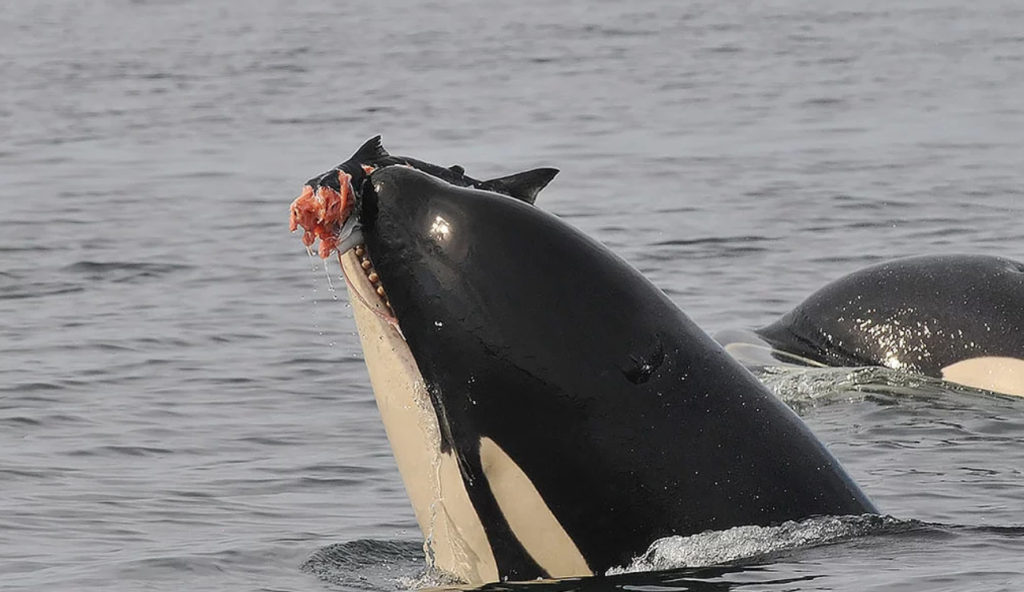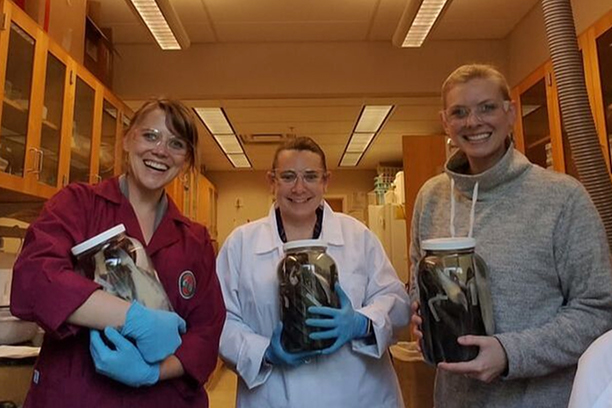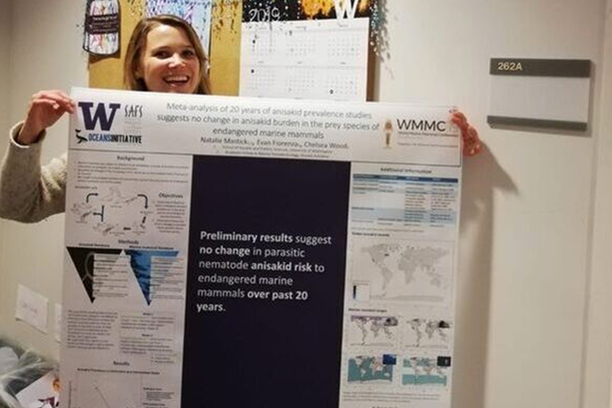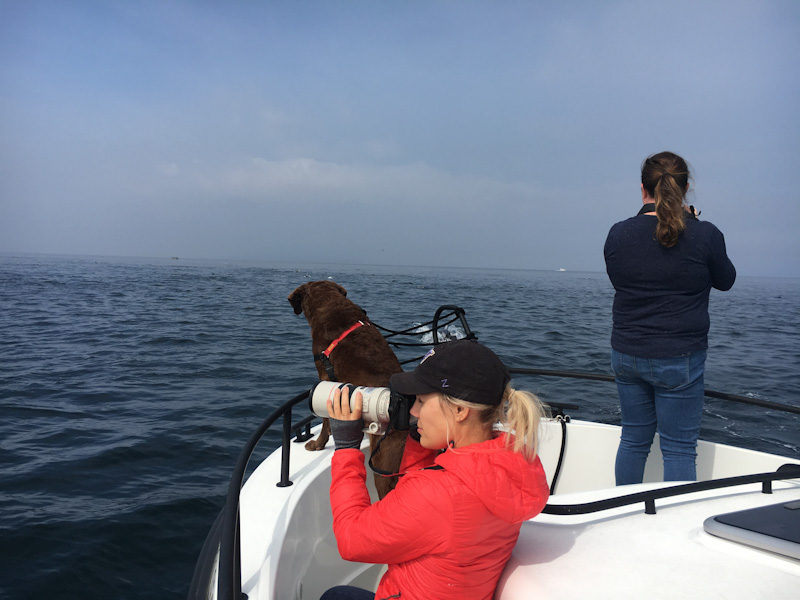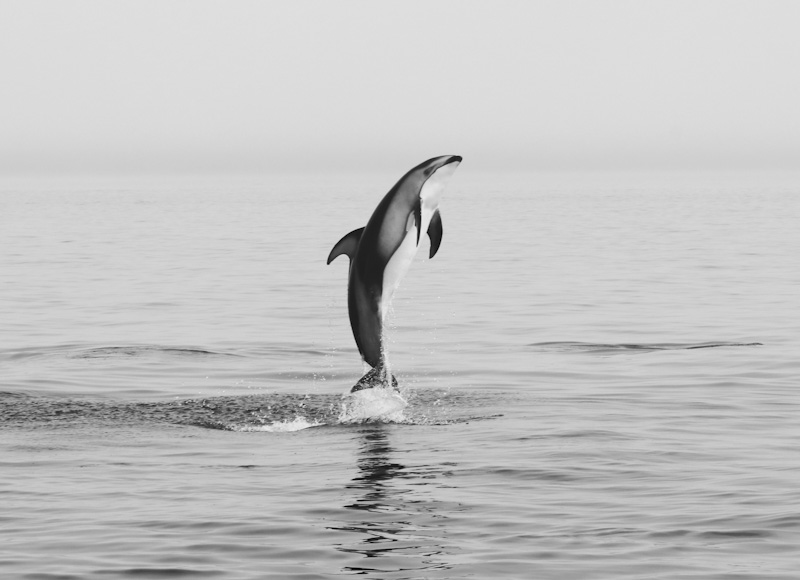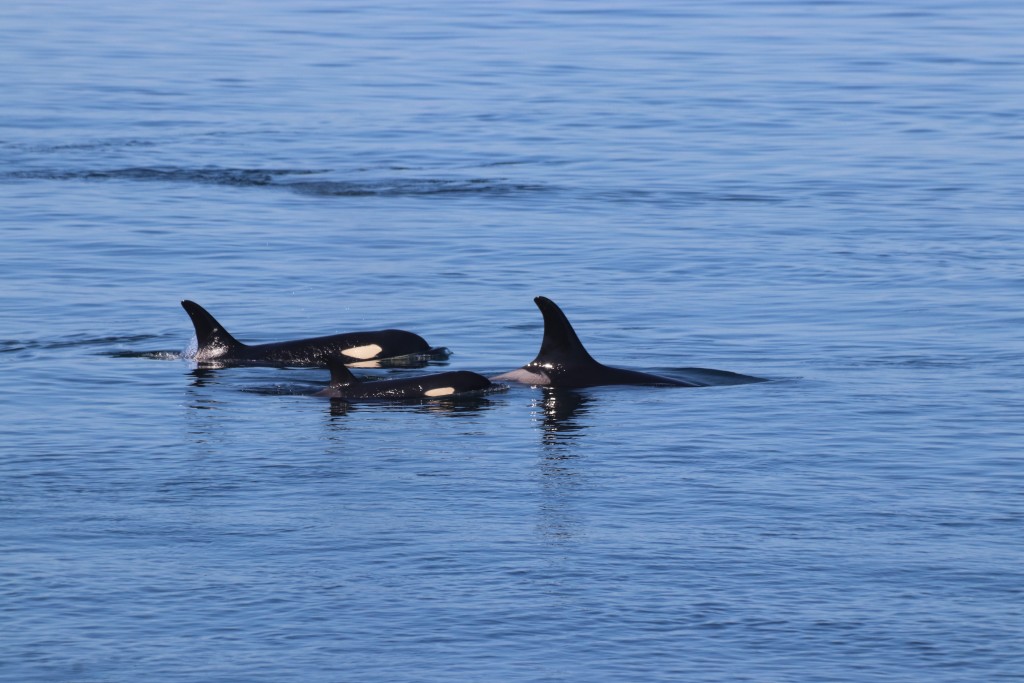Last month, our co-founder and Chief Scientist, Dr. Rob Williams, presented preliminary findings to Washington state’s Puget Sound Partnership Science Panel on our efforts to update what we know about the threats (lack of salmon, ocean noise, and toxic pollution) to southern resident killer whale (SRKW) recovery, to put those threats in the same mathematical currency, and to run different scenarios to see what it would take to prevent the extinction of this iconic population. Sadly, the answer was disheartening and underscored the seriousness of this issue.
When we led a similar effort in 2017, we concluded we could save SRKWs from extinction if we could all work together to get the orcas 30% more salmon. Back then, that seemed unattainable, but our scientific models showed we could recover SRKWs if we increased the number of Chinook salmon in the sea by 15% while doubling the whales’ hunting success by reducing noise from boats and ships. We knew in 2017 that our model relied on science that was already a few years out of date. Since 2017, the whales have been declining faster than our models predicted. We set out to find out why and what we could do about it.
Forecasting what it will take to prevent extinction
In 2021, many of you gave generously to help us work with Drs Ben Nelson and Eric Ward to update the part of our model that tells us how SRKW birth and death rates change in good and bad salmon years. With support from Puget Sound Partnership (PSP), we integrated those relationships in a new cumulative effects model and ran management scenarios to see what it would take to reverse the decline. With PSP funding, we expanded our models to include more and better information on contaminants, disease, parasites, inbreeding, and the occasional case of direct, human-caused mortality from vessel strike, etc.
We also turned our direction from hindcasting what got the whales in this mess over the last 40 years, to forecasting what it will take to allow these whales to persist in a warming climate. We found that even our most optimistic salmon recovery targets from 2017 will not be enough to prevent the extinction of this iconic population. We need to slow the decline, buy some more time, and try to prevent sick whales from dying. And it looks as though we have one killer whale generation—28 years—to turn things around before the population tips over into an accelerating decline toward extinction. Inbreeding and climate change make this difficult task even more vexing.
Collectively, we’ve made progress on the noise front. Ship slow-downs by Ports of Vancouver, Seattle, and Tacoma are resulting in less ship noise, and our work is proving that the whales are feeding more when we make less noise in the Salish Sea. Keeping smaller boats farther from whales, and fully protecting foraging hotspots, is helping. In our own organization, we have scaled up the use of innovative, non-lethal deterrents to reduce seal predation on salmon at human-built bottlenecks, such as dams, fish ladders, and the Hood Canal Bridge. All of these efforts are helping but they are not enough to turn the population’s decline into recovery.
SRKW behavioral health metrics program
This year, inspired by our new understanding of the challenge we face saving SRKWs, we started a new SRKW behavioral health metrics program in partnership with Dr. Joe Gaydos, scientist director at the SeaDoc Society.
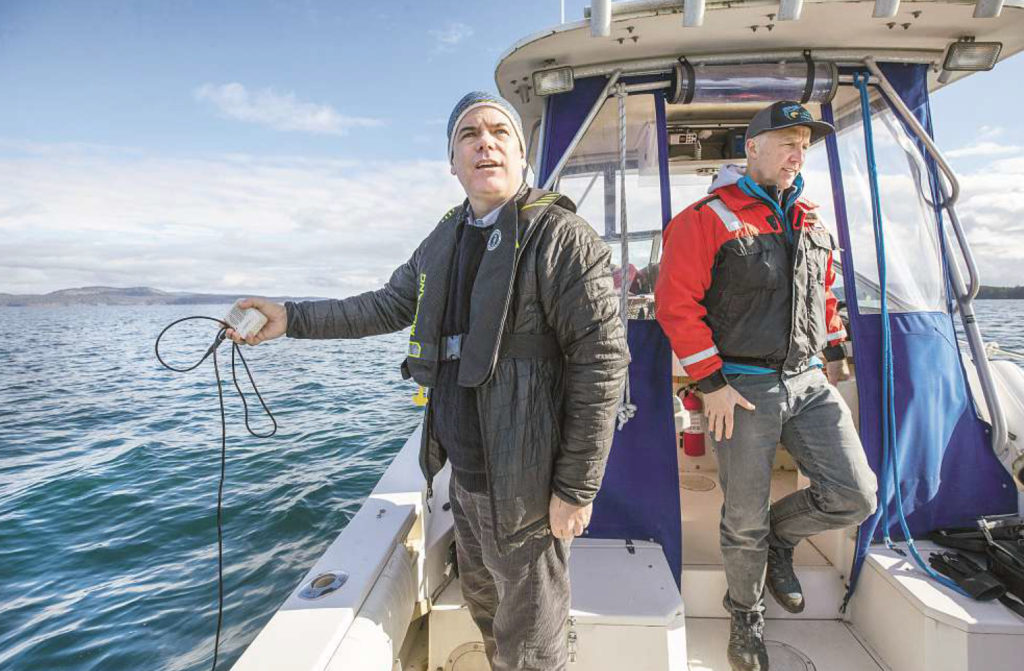
If you were short of breath, or feeling sluggish, you’d probably decide to go see a doctor. Your doctor would measure your breathing and heart rate and compare these to normal values. Similarly, in whales, abnormal behavior can be a powerful early warning that a whale is in trouble.
Fortunately, we have longitudinal data on breathing rates and swimming speeds of individual whales of known age and sex going back to 2003. We collect the data from land-based viewing sites using a surveyor’s theodolite as a completely noninvasive way to measure impacts of vessels on SRKW behavior, including foraging. We’ve reused the data to map foraging hotspots, and we are showing how the distribution of those foraging hotspots changes between good and bad salmon years. We’ve even used the data for noninvasive physiology studies that showed that a mother orca needs 42% more calories when she has a calf swimming beside her to keep up with the group.
Now, we are reexamining those meticulous data records and are finding hints that “whales of concern”, (meaning whales that have poor body condition and may not survive the season) tend to take shorter breaths and feed less often than healthy whales of the same age and sex. We believe the whales’ behavior can tell us when they are sick, long before they show up skinny or with that characteristic sign of fat loss behind the head (peanut-head) that indicates that a whale is near death. If we can detect warning signs sooner, then we can get wildlife veterinarians like Joe Gaydos out on the water to test whether an individual has a treatable infection, or would benefit from treatment for parasites.
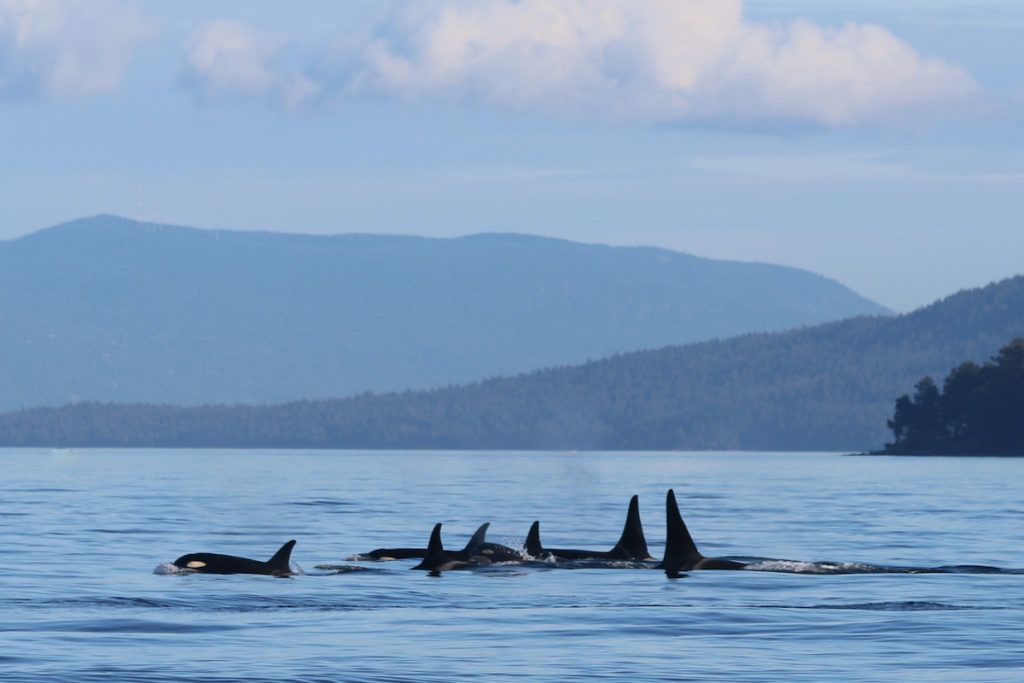
Southern residents need our help now more than ever
There is a perception that the SRKW population has always been small, and it fluctuates between 70 and 100 individuals. What this last year of working with top experts in genetics, population dynamics, wildlife health, and ecotoxicology has taught us, is that the whales are telling us something. There is a pattern here. We are not seeing random fluctuations in a small population. We are seeing a population declining by 1% per year, on average. Due to lack of mature females and inbreeding, that decline will accelerate toward extinction if we don’t mitigate threats now. We need all hands on deck to keep whales from getting sick, and sick whales from dying. And we need your help.
Conservation is a crisis discipline. Agencies tend to react to crises after they’ve become too obvious to ignore. If we’re going to prevent the extinction of our beloved southern resident killer whales, we need to look forward, not back. Frankly, that innovation comes from the conservation science sector, not the management sector, and it is fueled by individual philanthropists like you, not government grants.
The southern residents need your help now. As Oceans Initiative urgently scales up our work on the relationships between killer whale behavior, health, and population growth, we hope our community will turn their dedication into action. Can we count on your support today to help fund our continued research and the development of our SRKW behavioral health metrics program?

